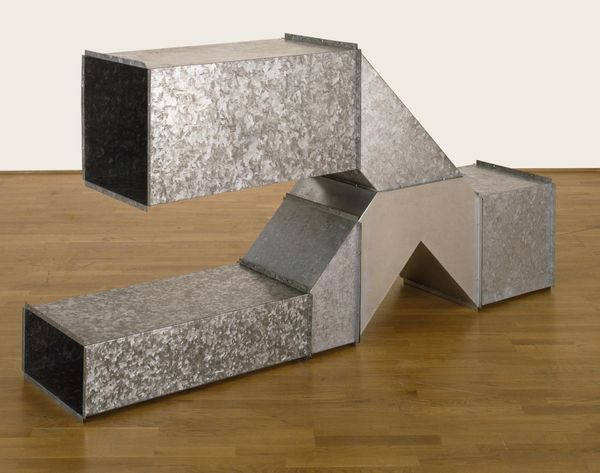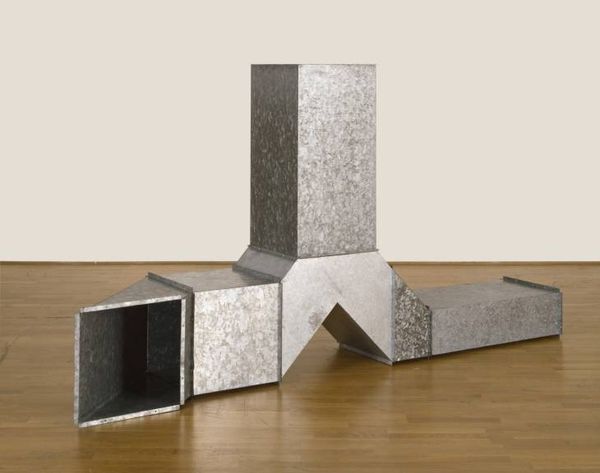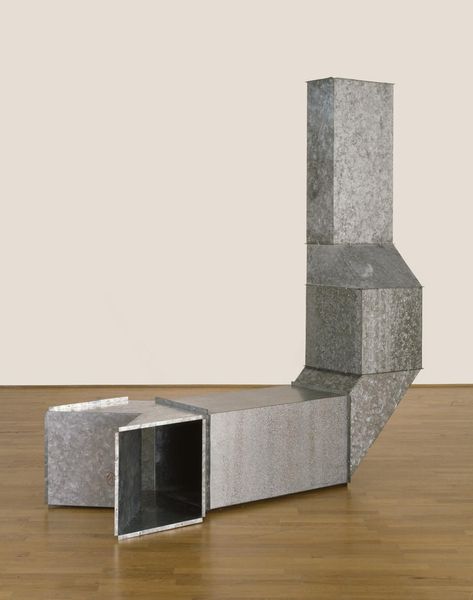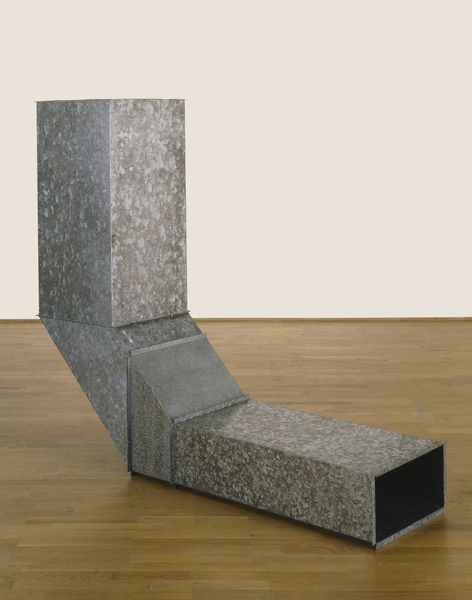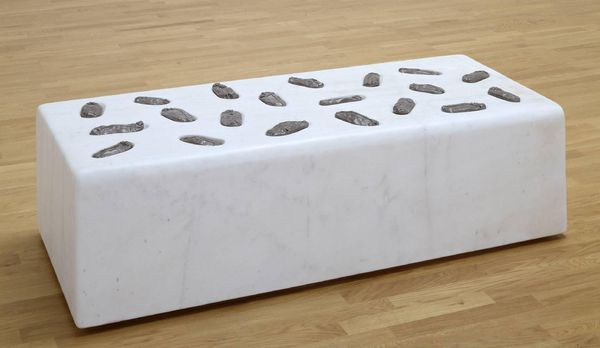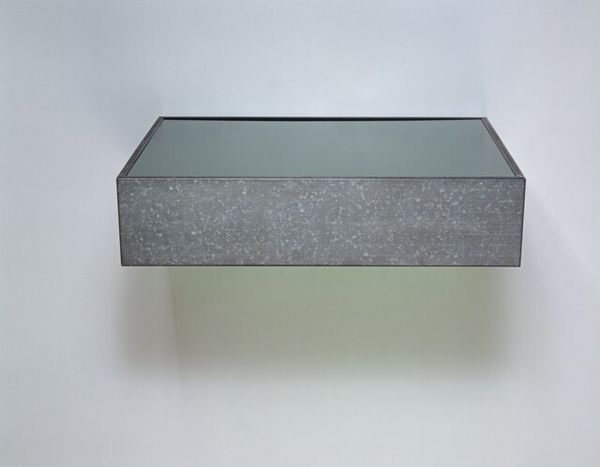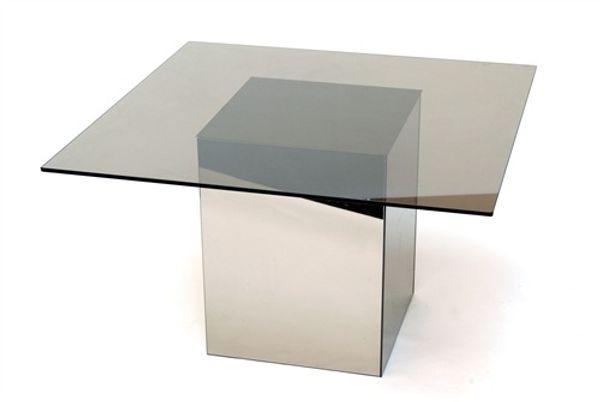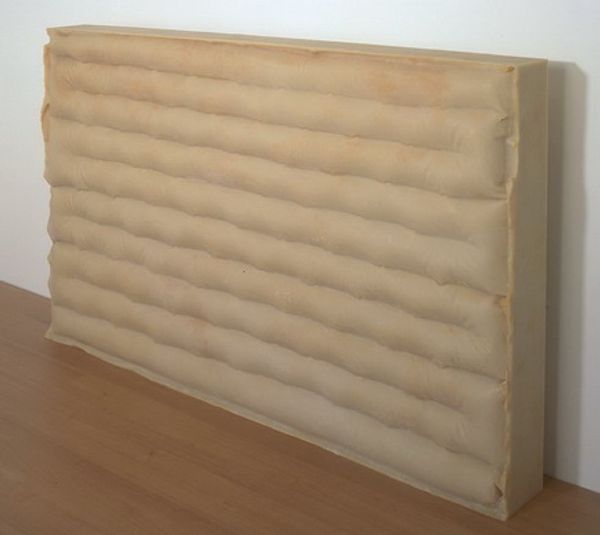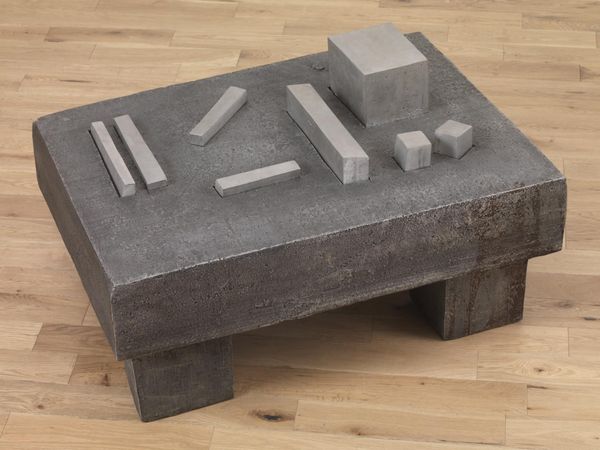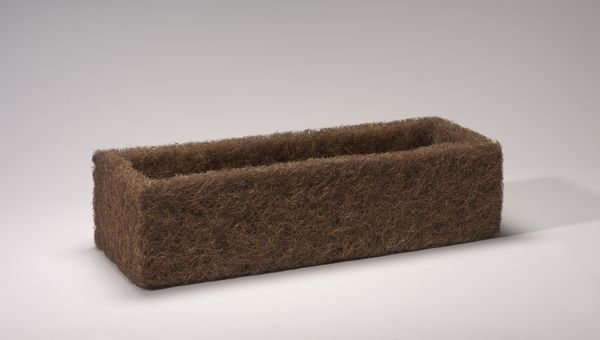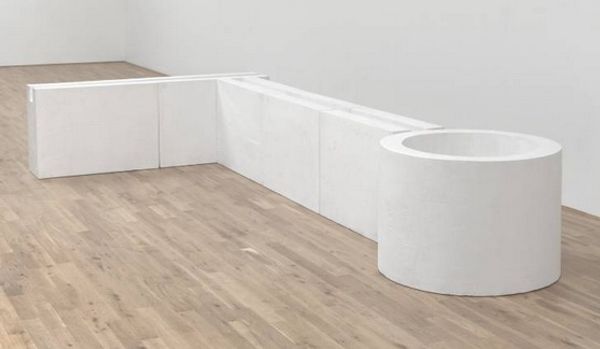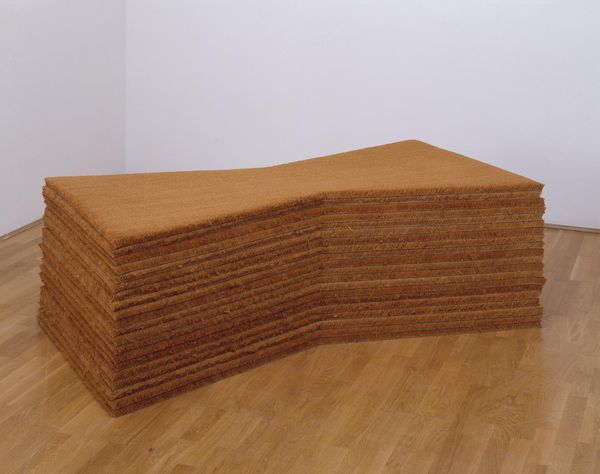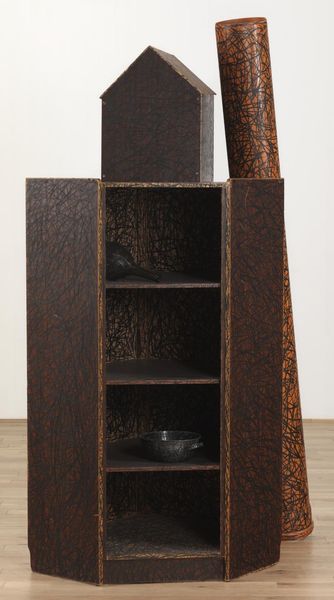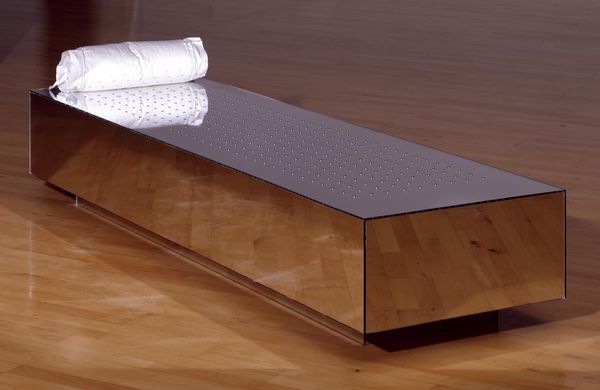![Square Tubes [Series D] by Charlotte Posenenske](/_next/image?url=https%3A%2F%2Fd2w8kbdekdi1gv.cloudfront.net%2FeyJidWNrZXQiOiAiYXJ0ZXJhLWltYWdlcy1idWNrZXQiLCAia2V5IjogImFydHdvcmtzLzA4OThlMDBkLTQ5Y2EtNDAwYi1iZThiLTJiZDM5MTUzOTM5My8wODk4ZTAwZC00OWNhLTQwMGItYmU4Yi0yYmQzOTE1MzkzOTNfZnVsbC5qcGciLCAiZWRpdHMiOiB7InJlc2l6ZSI6IHsid2lkdGgiOiAxOTIwLCAiaGVpZ2h0IjogMTkyMCwgImZpdCI6ICJpbnNpZGUifX19&w=3840&q=75)
Dimensions: Four elements: square tube: 460 x 460 x 920 mm; rectangular tube: 230 x 460 x 920 mm; angular element, opening: 460 x 460 mm; transition element, openings: 460 x 460 Overall display dimensions variable
Copyright: © Estate of Charlotte Posenenske/Burkhard Brunn, Frankfurt/M. | CC-BY-NC-ND 4.0 DEED, Photo: Tate
Curator: Welcome. We are standing before Charlotte Posenenske's "Square Tubes [Series D]," currently housed in the Tate Collections. Editor: It strikes me as stark, almost aggressively industrial. The metallic finish and modular form suggest a rejection of traditional artistic expression. Curator: Precisely. Posenenske’s choice of materials, those prefabricated galvanized steel elements, speaks volumes about her engagement with Minimalism and her critique of consumer culture. It echoes concerns of labor and the mass production of objects. Editor: Considering Posenenske's later abandonment of art for sociology, one can view this work as a bridge between aesthetic formalism and social activism. It seems to ask: where does art end and societal function begin? Curator: Indeed. It challenges us to reconsider the role of art within broader social and political structures. Editor: Ultimately, Posenenske compels us to acknowledge art's potential beyond mere aesthetic appeal.
Comments
tate 7 months ago
⋮
http://www.tate.org.uk/art/artworks/posenenske-square-tubes-series-d-t12778
Join the conversation
Join millions of artists and users on Artera today and experience the ultimate creative platform.
tate 7 months ago
⋮
Square Tubes [Series D] 1967 is a construction set comprised of six different hollow forms made from galvanised sheet steel. The elements resemble the industrial materials used to form ventilation pipes. These basic components can be combined to create any number of configurations, each unit having a standard opening with a protruding edge that allows them to be bolted together. The number of unit parts incorporated in each iteration of the work is not defined, meaning that they can be fashioned to fit a space, or continued indefinitely. The concept allows a curator or buyer to assemble and change the installation according to his or her own criteria, relinquishing some of the artist’s creative autonomy to others.
